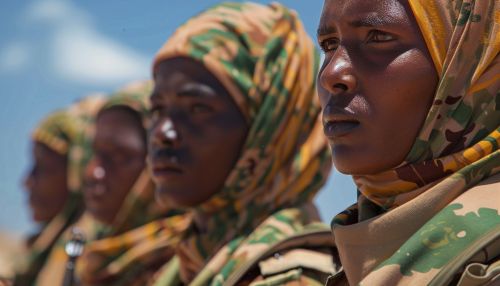Somali language
Introduction
The Somali language is a member of the Cushitic branch of the Afroasiatic language family. It is the mother tongue of the Somali people, who primarily inhabit the Horn of Africa, including Somalia, Djibouti, Ethiopia, and Kenya. Somali is an official language in Somalia and Somaliland, and it is also recognized in Djibouti. The language has a rich oral tradition, and it has been written in various scripts throughout its history.
Historical Background
Early History
The Somali language has ancient roots that trace back to the Proto-Cushitic languages spoken in the Horn of Africa. The earliest forms of Somali were likely influenced by neighboring Afroasiatic languages, including Oromo and Afar. The Cushitic languages are believed to have diverged around 5000 years ago, with Somali developing its distinct characteristics over millennia.
Scripts and Writing Systems
Somali has been written in several scripts over its history. The earliest known script was the Osmanya script, developed by Osman Yusuf Kenadid in the early 20th century. Other scripts used include the Wadaad's writing, an Arabic-based script, and the Borama script, created by Sheikh Abdurahman Sheikh Nuur. In 1972, the Latin alphabet was officially adopted for writing Somali, which has since become the standard script.


Phonology
Consonants
Somali has a rich consonantal system with 22 consonant phonemes. These include voiced and voiceless plosives, fricatives, nasals, and approximants. Unique to Somali are the implosive consonants, such as /ɓ/ and /ɗ/, which are produced with an inward airflow.
Vowels
The vowel system in Somali consists of five vowel qualities: /a/, /e/, /i/, /o/, and /u/. Each vowel can be short or long, making a total of ten distinct vowel sounds. Vowel length can change the meaning of words, making it a phonemic feature.
Tone and Stress
Somali is a tonal language, with pitch playing a crucial role in distinguishing word meanings. There are two primary tones: high and low. Stress in Somali is typically placed on the penultimate syllable of a word, although there are exceptions.
Morphology
Nouns
Somali nouns are marked for gender, number, and case. The language has two grammatical genders: masculine and feminine. Pluralization is achieved through various morphological processes, including suffixation and internal vowel changes. Somali also has a complex case system, with nominative, genitive, and accusative cases.
Verbs
Verbs in Somali are inflected for tense, aspect, mood, and voice. The language has a rich system of derivational morphology, allowing for the formation of causative, reciprocal, and passive verbs. Verb conjugation is influenced by subject agreement, with different forms for singular and plural subjects.
Pronouns
Somali pronouns are marked for person, number, and gender. There are distinct forms for subject, object, and possessive pronouns. Reflexive pronouns are also used to indicate actions performed by the subject upon themselves.
Syntax
Word Order
The basic word order in Somali is Subject-Object-Verb (SOV). However, the language exhibits flexibility in word order due to its rich inflectional morphology. Topicalization and focus can lead to variations in sentence structure.
Noun Phrases
Noun phrases in Somali typically consist of a noun followed by modifiers such as adjectives, possessives, and relative clauses. The head noun determines the agreement features of the entire phrase.
Verb Phrases
Verb phrases in Somali include the main verb and any auxiliary verbs, adverbs, and objects. The placement of adverbs and objects can vary depending on emphasis and focus.
Dialects
Somali has several dialects, which can be broadly categorized into three groups: Northern, Benadir, and Maay. The Northern dialects, including the Northern Somali dialect, are considered the standard form of the language. Benadir dialects are spoken along the southern coast, while Maay is used in the southwestern regions. Each dialect has unique phonological, morphological, and syntactic features.
Sociolinguistic Aspects
Language and Identity
The Somali language plays a crucial role in the cultural and national identity of the Somali people. It is a symbol of unity and pride, reflecting the shared heritage and history of the Somali-speaking communities.
Language Policy and Education
Somali is the medium of instruction in primary and secondary schools in Somalia. Efforts have been made to standardize the language and promote literacy through educational reforms. The adoption of the Latin script has facilitated the development of educational materials and resources.
Media and Communication
Somali is widely used in media, including radio, television, and print. The language has a vibrant presence on the internet, with numerous websites, blogs, and social media platforms catering to Somali speakers. The use of Somali in media has helped preserve and promote the language in the digital age.
Literature and Oral Tradition
Somali has a rich oral tradition, with poetry being a central aspect of Somali culture. Traditional forms of poetry, such as the Gabay and Geeraar, are highly esteemed and continue to be practiced. Written literature in Somali has also flourished, with notable works in prose, poetry, and drama.
Challenges and Preservation
The Somali language faces challenges, including the impact of globalization and the dominance of foreign languages such as English and Arabic. Efforts to preserve and promote Somali include language revitalization programs, the development of educational resources, and the promotion of Somali in media and technology.
